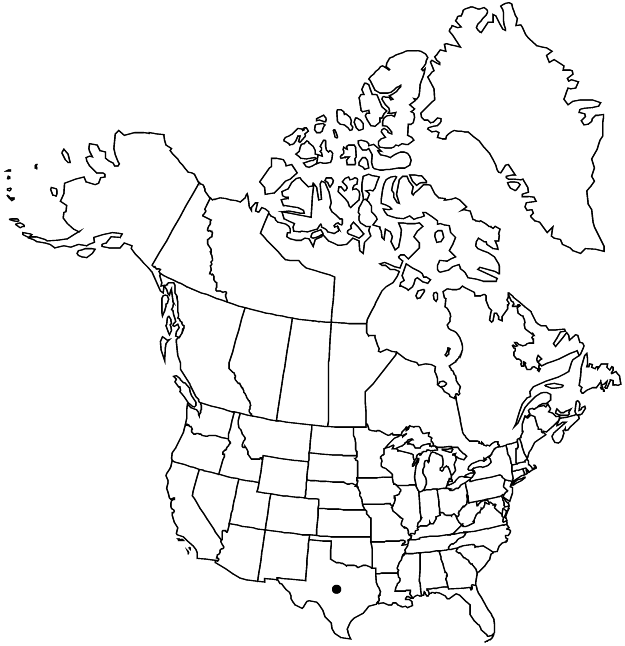Arenaria livermorensis
Brittonia 18: 308. 1967.
Plants perennial, matted, moss-like. Taproots filiform. Stems 15–25, decumbent, trailing, green, 1–4 cm; internodes angular to grooved, 1–11/2 times as long as leaves, minute, shiny, pubescence of widely spreading to slightly retrorse hairs in 2 lines. Leaves connate basally, with herbaceous sheath 0.1–0.2 mm, sessile; blade 1-veined, vein prominent abaxially, linear, 4–6 × 1 mm, herbaceous, rigid, margins thickened, herbaceous, shiny, lined with peglike cilia, apex acute, pungent-tipped, not pustulate, glabrous; axillary leaf clusters present. Inflorescences solitary flowers in distal leaf-axils. Pedicels erect or ascending in fruit, 6–10 mm, minutely pubescent. Flowers: sepals green, 1-veined, slightly keeled proximally, broadly lanceolate (herbaceous portion narrowly lanceolate), 3–4 mm, not enlarging in fruit, apex acute to acuminate, not pustulate, glabrous; petals absent; stamens ca. 8. Capsules very loosely enclosed by calyx, ovoid, 2–3 mm, 2/3–4/5 times as long as sepals. Seeds 5–7, dark-brown to black, subglobose, slightly compressed, ca. 1 mm, shiny, smooth.
Phenology: Flowering spring–summer.
Habitat: Crevices of cliffs and bare walls
Elevation: 2100-2500 m
Discussion
Of conservation concern.
Arenaria livermorensis is known only from the Davis Mountains in the Trans-Pecos region of western Texas. It may be related to A. lycopodioides Willdenow ex Schlechtendal, a species found in the mountains of central Mexico.
Selected References
None.
Lower Taxa
"/3-4/5timesaslongassepals" is not declared as a valid unit of measurement for this property.
